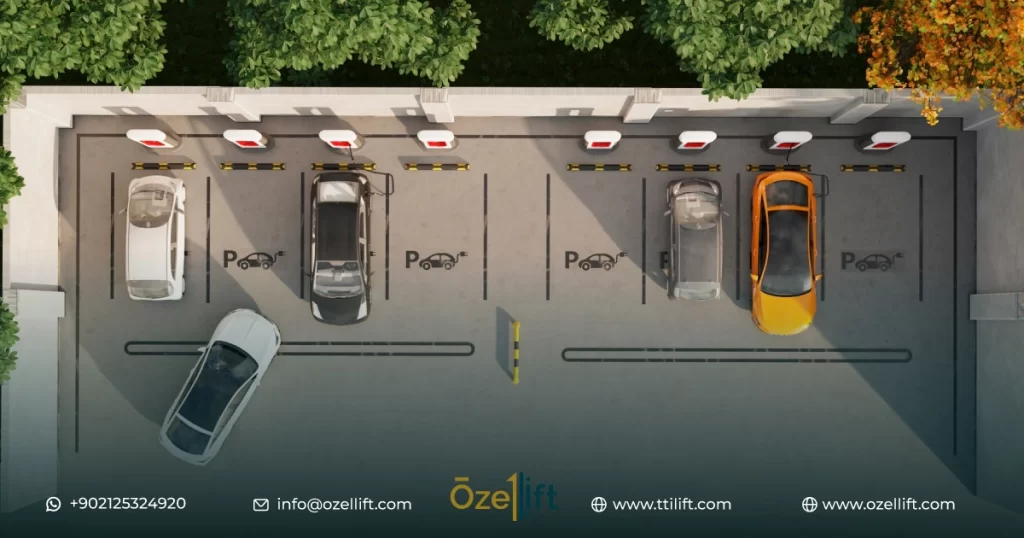Elevators are an integral part of our daily lives, whisking us between floors in offices, apartments, and shopping malls. But have you ever stopped to wonder: just how big is a standard elevator? The truth is, there’s no one-size-fits-all answer. standard elevator dimensions vary depending on several factors, but this article will unveil the average elevator dimensions and considerations for these vertical workhorses.
Standard elevator dimension – different Elevator Types
Elevators, those vertical lifelines in our buildings, come in various forms to suit specific purposes. Here’s a breakdown of common elevator types and their standard dimensions:
Standard elevator dimensions – Residential Elevator
Residential elevators, designed for private homes, are generally more compact than their commercial counterparts. Expect a typical residential elevator to be around 3 feet wide by 4 feet deep (approximately 0.91 meters by 1.22 meters). This size comfortably fits a few people and essential belongings.
However, don’t be limited by this standard! For spacious homes, consider installing a larger elevator to accommodate wheelchairs, strollers, or even furniture. Remember, consulting with an elevator specialist is crucial to ensure your chosen dimensions align with your needs and available space.
Know more about
Passenger Elevator Capacity
Average elevator dimensions – commercial elevator dimensions
Commercial elevators, found in office buildings, shopping malls, and hospitals, prioritize capacity. commercial elevator dimensions typically boast a roomier design, measuring around 6 feet wide by 5 feet deep (approximately 1.83 meters by 1.53 meters). This allows for a comfortable ride for several passengers and ensures a smooth flow of traffic within the building.
typical elevator dimensions of Freight Elevators
Designed for hauling cargo, these elevators prioritize size and weight capacity. Standard dimensions start around 6 feet wide by 6 feet deep (1.83 meters x 1.83 meters) and can reach 10 feet by 10 feet (3.05 meters x 3.05 meters) or more for heavy-duty applications. Doorways are wider to accommodate bulky objects.
Average elevator dimensions – service elevator dimensions
Primarily used by building maintenance staff, these elevators offer access to mechanical rooms, rooftops, and other service areas. Average elevator dimensions depending on the intended use, but they’re generally smaller than passenger elevators, often measuring around 4 feet wide by 4 feet deep (1.22 meters x 1.22 meters).
Know more about
Service Elevator Dimensions
ADA Standards: Ensuring Accessibility for All
The Americans with Disabilities Act (ADA) mandates specific minimum dimensions for elevators to promote accessibility. These regulations ensure elevators can accommodate wheelchairs and other mobility aids. By following ADA guidelines, buildings guarantee everyone can navigate their floors freely.
Here’s a quick rundown of the minimum ADA-compliant dimensions for elevators:
- Depth: 51 inches (1.30 meters)
- Width: 68 inches (1.73 meters)
- Doorway width: 36 inches (0.91 meters)
Remember, these are just minimums. Many buildings opt for larger elevators to enhance comfort and capacity.
Unveiling the Factors Affecting average elevator dimensions
So, what exactly determines an elevator’s size? Here are some key considerations:
- Building purpose and traffic flow: Busy office buildings with high foot traffic naturally require larger elevators than low-rise apartment buildings.
- Passenger capacity: The desired number of people an elevator can comfortably transport heavily influences its dimensions.
- Code regulations: Local building codes often dictate minimum elevator sizes to ensure safety and accessibility.
The Takeaway: Tailored Dimensions for Every Ride
Elevator dimensions are like fingerprints – no two are exactly alike. Understanding the factors at play and the available options empowers you to make informed decisions, whether you’re a homeowner seeking a cozy lift or a building manager prioritizing spacious and accessible transportation. So, the next time you step into an elevator, take a moment to appreciate the thought behind its design!
Elevate Your Expectations: Consider Ozellift for Exceptional Elevators
Looking for an elevator solution that prioritizes quality and performance? Look no further than Ozellift. With a proven track record of excellence, Ozellift offers a comprehensive range of elevators designed to seamlessly integrate into your building’s needs.
Q: What’s the average elevator size?
A: Passenger elevators typically range from 5′ x 8′ to 8′ x 10′ (1.5 x 2.4m to 2.4 x 3.0m).
Q: How many people fit in an average elevator?
A: It depends on size, but most hold 10-15 people comfortably.
Q: Are there standard elevator dimensions?
A: Yes, codes recommend minimums for width, depth, and door clearance.
Q: What affects elevator size in a building?
A: Traffic flow, building use, and accessibility needs all play a role.


